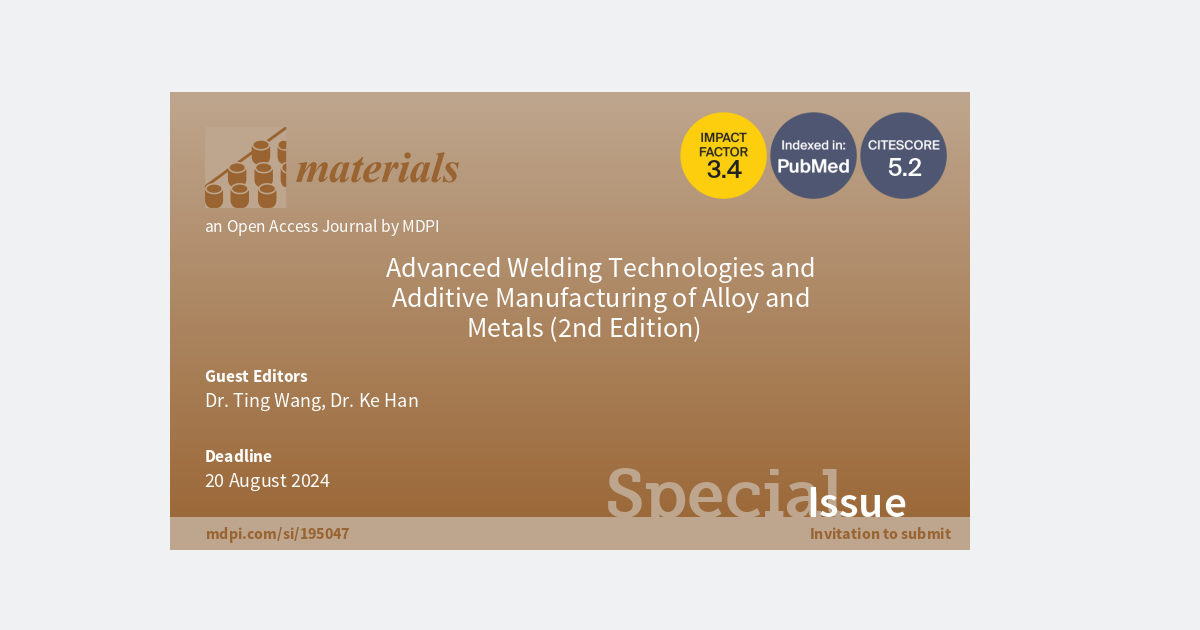Advanced Welding Technologies and Additive Manufacturing of Alloys and Metals (2nd Edition)
A special issue of Materials (ISSN 1996-1944). This special issue belongs to the section "Metals and Alloys".
Deadline for manuscript submissions: 20 August 2024 | Viewed by 647

Special Issue Editors
Interests: microstructure; dissimilar metals; welded joints
Special Issues, Collections and Topics in MDPI journals
Special Issue Information
Dear Colleagues,
This Special Issue focuses on the latest results of research on the welding and additive manufacturing technology of advanced metal materials, including the microstructure, mechanical properties, and quality control of welding and additive manufacturing based on heat sources such as arcs, lasers, and electron beams.
The key areas of focus are new strengthening mechanisms, the relationship between microstructure and properties, new microstructure control technologies, process stability, and on-line defect detection methods.
The current Special Issue aims to explore the advanced welding and additive manufacturing of alloys and metals and study the basic principles of microstructure and property regulation. The articles presented in this Special Issue will address various topics, ranging from the exploration of advanced welding technologies to microstructure regulation and the performance improvement of alloys and metals.
Dr. Ting Wang
Dr. Ke Han
Guest Editors
Manuscript Submission Information
Manuscripts should be submitted online at www.mdpi.com by registering and logging in to this website. Once you are registered, click here to go to the submission form. Manuscripts can be submitted until the deadline. All submissions that pass pre-check are peer-reviewed. Accepted papers will be published continuously in the journal (as soon as accepted) and will be listed together on the special issue website. Research articles, review articles as well as short communications are invited. For planned papers, a title and short abstract (about 100 words) can be sent to the Editorial Office for announcement on this website.
Submitted manuscripts should not have been published previously, nor be under consideration for publication elsewhere (except conference proceedings papers). All manuscripts are thoroughly refereed through a single-blind peer-review process. A guide for authors and other relevant information for submission of manuscripts is available on the Instructions for Authors page. Materials is an international peer-reviewed open access semimonthly journal published by MDPI.
Please visit the Instructions for Authors page before submitting a manuscript. The Article Processing Charge (APC) for publication in this open access journal is 2600 CHF (Swiss Francs). Submitted papers should be well formatted and use good English. Authors may use MDPI's English editing service prior to publication or during author revisions.
Keywords
- welding
- additive manufacturing
- microstructure
- mechanical properties






